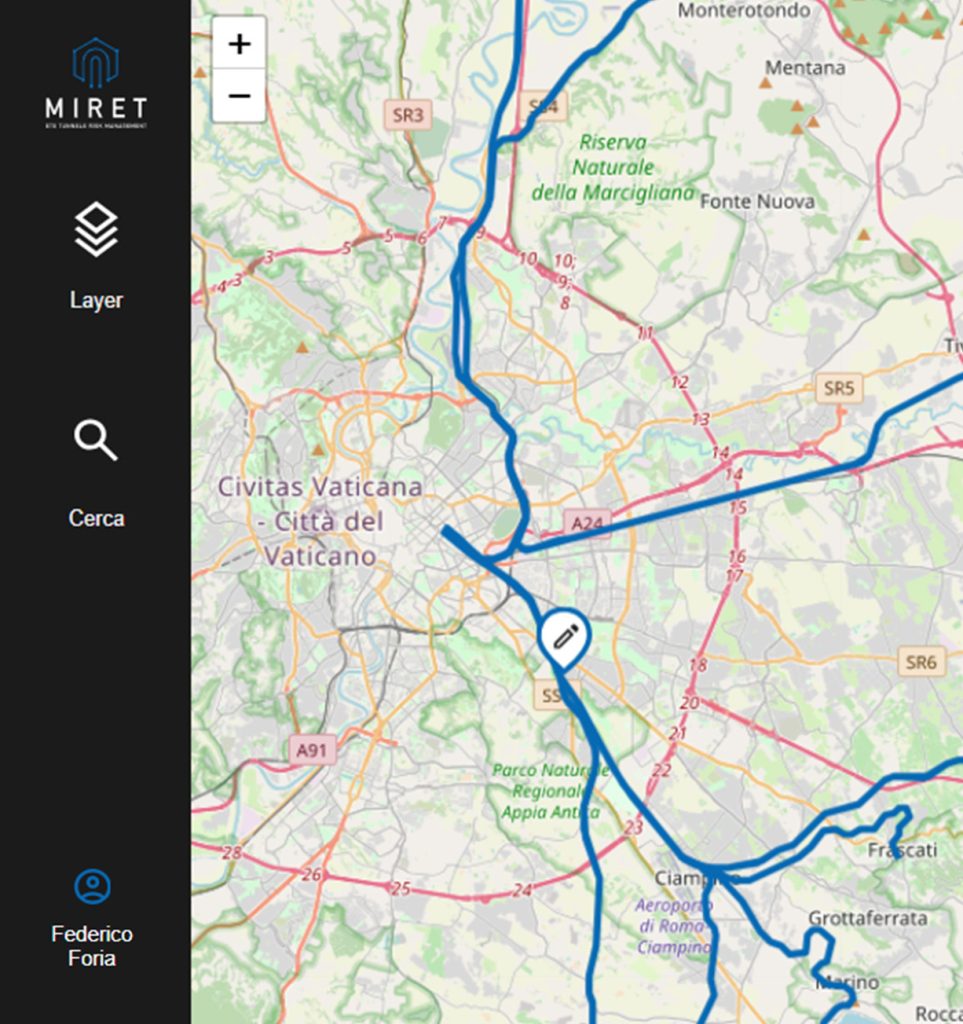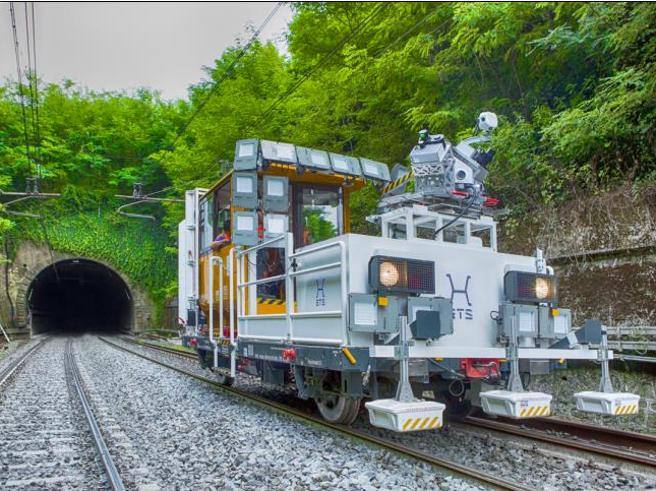Miret
Management Identification Risk for Existing Tunnels, a new fast and minimally invasive method for diagnostic of existing tunnels and a new approach for management and identification of the Risk for Existing Tunnels
MIRET Technology: Management Identification Risk for Existing Tunnels
Management Identification Risk for Existing Tunnels, a new fast and minimally invasive method for diagnostic of existing tunnels and a new approach for management and identification of the Risk for Existing Tunnels

MIRET smart, sustainable, objective approach for planning, design and maintenance of linear infrastructure.
MIRET proces
The MIRET process combines innovative multidimensional surveying systems, mobile mapping, geotechnical and structural analyses, and, through the use of internally developed algorithms, formulates risk analyses by sharing them in a common technical and management workspace: the generated workflow allows inspection data to be linked and manipulated over time, standardizing processes and languages.
The Knowledge, preservation, and maintenance
The Knowledge, preservation, and maintenance of heritage infrastructure is one of the most actual challenges. Imaging new planning and management strategies to know and predict the condition of infrastructure is fundamental. MIRET is the ETS reply to this challenge.
Digitization of infrastructure
Preserving the integrity of infrastructure and the safety of people is our goal. Knowing and predicting the conditions of the infrastructure, allows us to adopt new strategies of planning and intervention. Digitization and data engineering become information to support the decision maker, this is the purpose of MIRET, the innovative methodology for diagnostics of existing tunnels through multidimensional mobile mapping systems and a new approach for risk management and identification supported by artificial intelligence allows to adopt a non-invasive, efficient, environmentally friendly approach.
Assets and Solution
MIRET and MIRETS: Approach the analysis of the elements focusing on integrated workflow to connect survey inspection data to geology, digitalization, diagnostic, and design. This approach can be defined through the following milestone: Survey and Inspection (SI), Infrastructure/Slope Digitalization (DI), Priorities Analysis (PA), Priorities Analysis (PA), Planning and Design (PD), Works and Maintenance (WM), Monitoring (MO)
Risk management
Risk management of infrastructure as adaptation to climate change.
Today's infrastructure cannot be considered sustainable without management that takes climate change adaptation into account. Ensuring that our transport system is truly resilient to future crises is also a key objective of future EU transport policy. Infrastructure must be resilient in both structure and management. ETS has interpreted this need by taking the lead in an R&D project in collaboration with the IU-RESCAT/C3 department of the Spanish University of Rovira to develop a risk management tool capable of returning an index of risk related to extreme weather events along an infrastructure.
